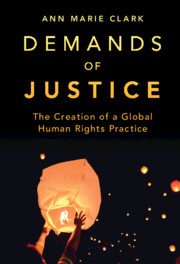171 results
Beyond individual responsibility – towards a relational understanding of financial resilience through participatory research and design
-
- Journal:
- Journal of Social Policy , First View
- Published online by Cambridge University Press:
- 23 January 2024, pp. 1-18
-
- Article
-
- You have access
- Open access
- HTML
- Export citation
Arthritis Patient Education: How Economic Evaluations Can Inform Health Policy
-
- Journal:
- Canadian Journal on Aging / La Revue canadienne du vieillissement / Volume 16 / Issue S1 / Spring Printemps 1997
- Published online by Cambridge University Press:
- 08 November 2023, pp. 162-176
-
- Article
- Export citation
Trauma-focused therapy in early psychosis: results of a feasibility randomized controlled trial of EMDR for psychosis (EMDRp) in early intervention settings
-
- Journal:
- Psychological Medicine / Volume 54 / Issue 5 / April 2024
- Published online by Cambridge University Press:
- 26 October 2023, pp. 874-885
-
- Article
-
- You have access
- Open access
- HTML
- Export citation
Factors associated with the need for inotropic support following pulmonary artery banding surgery for CHD
-
- Journal:
- Cardiology in the Young / Volume 33 / Issue 11 / November 2023
- Published online by Cambridge University Press:
- 06 March 2023, pp. 2350-2356
-
- Article
- Export citation
Sovereign Limits and Regional Opportunities for Global Civil Society in Latin America
-
- Journal:
- Latin American Research Review / Volume 36 / Issue 3 / 2001
- Published online by Cambridge University Press:
- 05 October 2022, pp. 7-35
-
- Article
-
- You have access
- Export citation
Lower limb muscle performance during a closed chain single leg squat and a squat jump in people with leg weakness after stroke: A comparative study
-
- Journal:
- Brain Impairment , First View
- Published online by Cambridge University Press:
- 25 March 2022, pp. 1-12
-
- Article
-
- You have access
- Open access
- HTML
- Export citation
Preface
-
- Book:
- Demands of Justice
- Published online:
- 03 March 2022
- Print publication:
- 24 February 2022, pp xi-xvi
-
- Chapter
- Export citation
1 - Introduction
-
- Book:
- Demands of Justice
- Published online:
- 03 March 2022
- Print publication:
- 24 February 2022, pp 1-11
-
- Chapter
- Export citation
6 - “Together for Rights”
-
- Book:
- Demands of Justice
- Published online:
- 03 March 2022
- Print publication:
- 24 February 2022, pp 126-169
-
- Chapter
- Export citation
4 - Expanding the Global Neighborhood
-
- Book:
- Demands of Justice
- Published online:
- 03 March 2022
- Print publication:
- 24 February 2022, pp 52-93
-
- Chapter
- Export citation
7 - Conclusion
-
- Book:
- Demands of Justice
- Published online:
- 03 March 2022
- Print publication:
- 24 February 2022, pp 170-180
-
- Chapter
- Export citation
Figures
-
- Book:
- Demands of Justice
- Published online:
- 03 March 2022
- Print publication:
- 24 February 2022, pp viii-viii
-
- Chapter
- Export citation
Dedication
-
- Book:
- Demands of Justice
- Published online:
- 03 March 2022
- Print publication:
- 24 February 2022, pp v-v
-
- Chapter
- Export citation

Demands of Justice
- The Creation of a Global Human Rights Practice
-
- Published online:
- 03 March 2022
- Print publication:
- 24 February 2022
Epigraph
-
- Book:
- Demands of Justice
- Published online:
- 03 March 2022
- Print publication:
- 24 February 2022, pp vi-vi
-
- Chapter
- Export citation
Tables
-
- Book:
- Demands of Justice
- Published online:
- 03 March 2022
- Print publication:
- 24 February 2022, pp ix-x
-
- Chapter
- Export citation
Index
-
- Book:
- Demands of Justice
- Published online:
- 03 March 2022
- Print publication:
- 24 February 2022, pp 196-206
-
- Chapter
- Export citation
Contents
-
- Book:
- Demands of Justice
- Published online:
- 03 March 2022
- Print publication:
- 24 February 2022, pp vii-vii
-
- Chapter
- Export citation
3 - Human Rights Tools in the Pursuit of Justice
-
- Book:
- Demands of Justice
- Published online:
- 03 March 2022
- Print publication:
- 24 February 2022, pp 25-51
-
- Chapter
- Export citation
Bibliography
-
- Book:
- Demands of Justice
- Published online:
- 03 March 2022
- Print publication:
- 24 February 2022, pp 181-195
-
- Chapter
- Export citation



